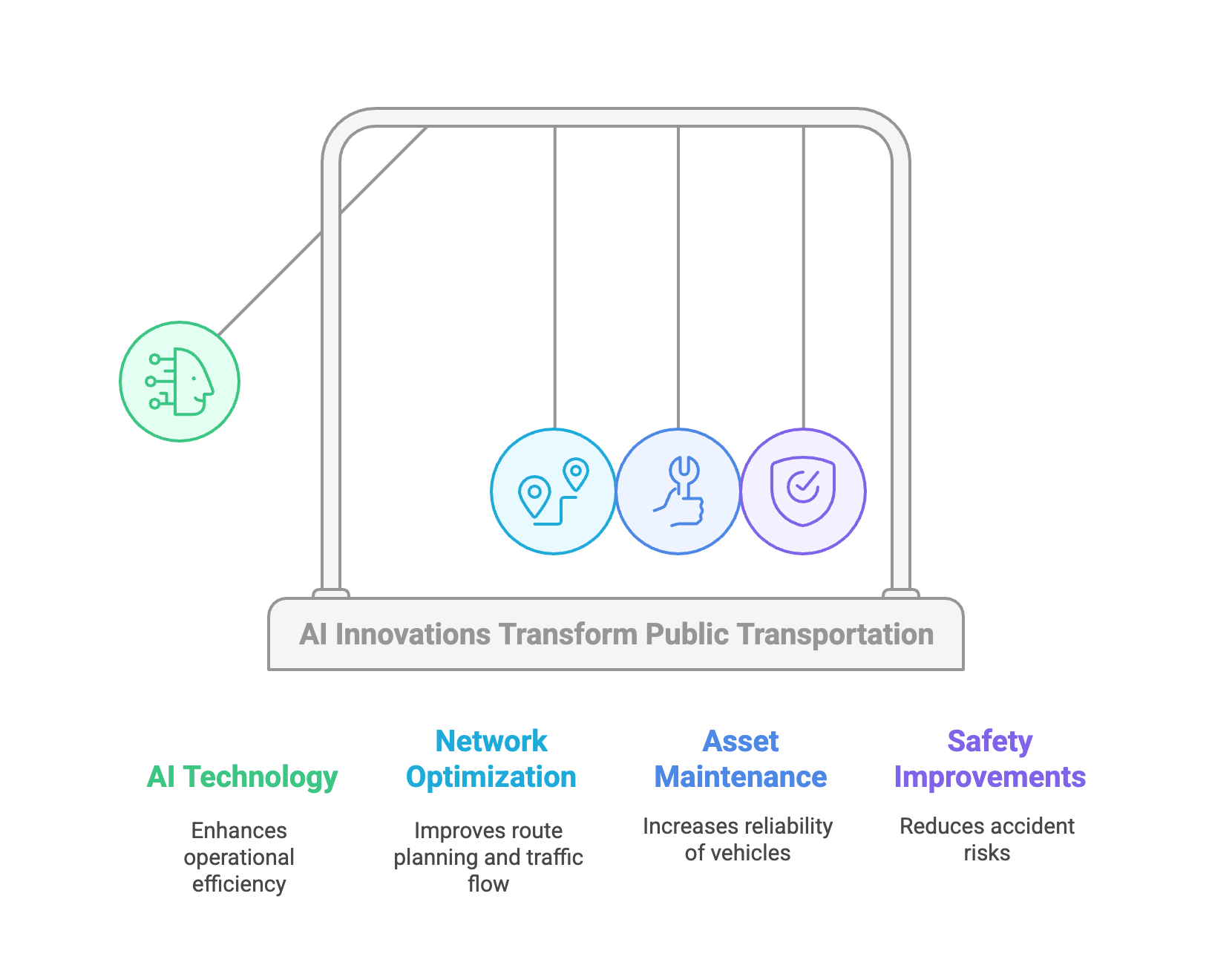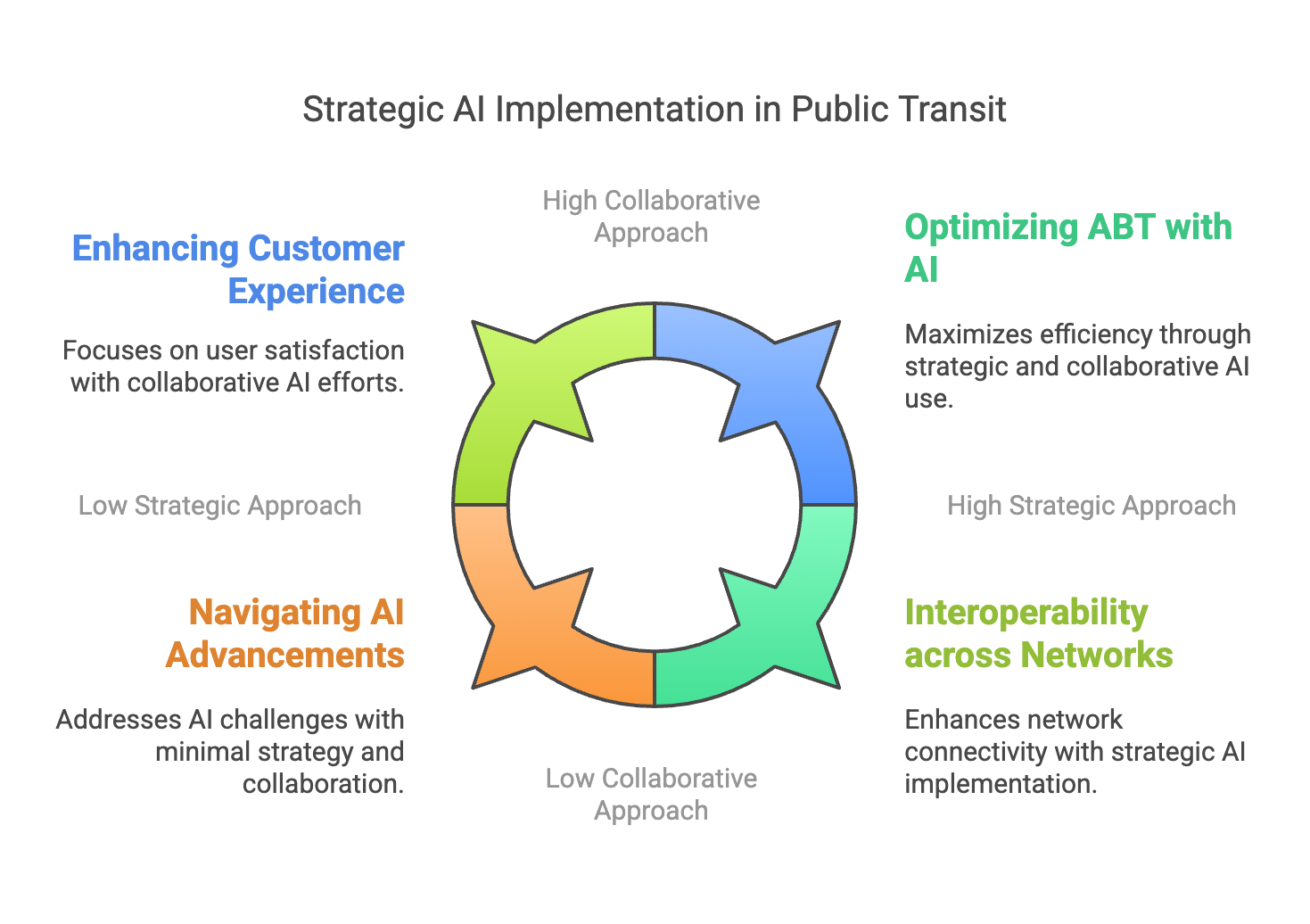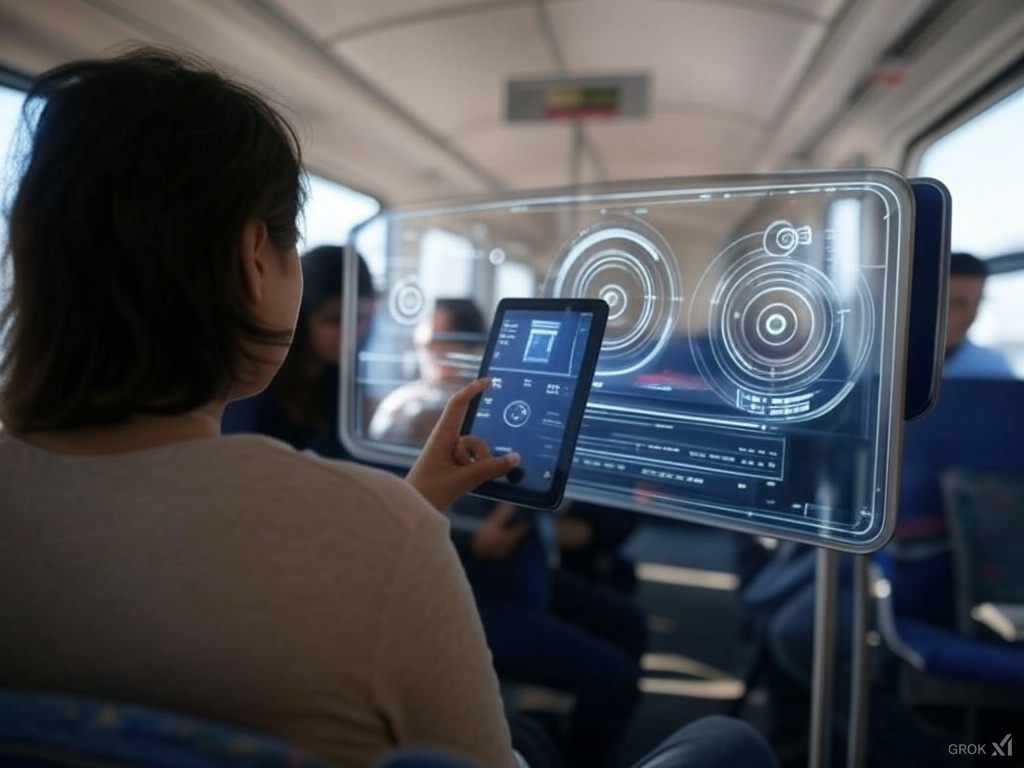Not So Scary After All
For those who navigated personal and professional lives before the digital age, artificial intelligence (AI) was often depicted by Hollywood as a looming, apocalyptic force. Today, however, AI has evolved into a transformative tool, reshaping industries with innovation and efficiency. Now, AI stands as a powerful force in technological progress, with its greatest challenge being the disengagement of industry veterans and those unfamiliar with complex technical concepts. However, change is the key to progress, and AI has immense potential within the public transportation sector beyond its current applications.
Current Applications and Barriers to Adoption
As AI continues to evolve, its application in public transportation remains largely in the pilot and trial phases, with significant advancements expected in the coming decade as infrastructure and regulatory frameworks catch up. The challenges of ensuring public safety, as illustrated by the tragic 2018 driverless vehicle accident involving Elaine Herzberg, emphasize the need for careful AI implementation. Despite this, AI-driven innovations are emerging across network optimization, asset maintenance, operational efficiency, and safety.

Global AI Innovations in Public Transit
- Singapore: The Land Transport Authority utilises AI in traffic management via the ‘Intelligent Transport Systems’ solution. By analyzing real-time traffic data through sensors and cameras, AI optimizes signal timings, reducing congestion and improving commute times.
- London: The British Transport Police, in collaboration with Transport for London, is trialing AI-powered CCTV surveillance to detect fare evasion and suspicious activity, aiming to enhance security and minimize revenue losses.
- Germany: Deutsche Bahn’s AI-integrated ‘E-Check’ system efficiently diagnoses maintenance needs for its InterCity Express (ICE) trains, minimizing downtime and costs while improving safety.
- Australia: Transport for New South Wales, in partnership with Cisco, has tested AI alongside IoT and Edge computing to monitor real-time transit service performance, aiding in strategic network planning.
Key Barriers to AI Adoption
The primary barriers to widespread AI adoption include investment constraints, regulatory challenges, and public skepticism. Regulatory frameworks must evolve to keep pace with technological advancements, ensuring compliance and security. Additionally, public trust in AI-driven transit solutions remains a challenge, requiring clear communication of benefits and robust data protection measures. However, agencies leveraging smartcard and automated fare collection (AFC) data can enhance efficiencies through AI, provided infrastructure investment aligns with technological advancements and regulatory compliance. One notable evolution is the shift toward account-based ticketing (ABT), which, when combined with AI, could usher in a new era of personalised, frictionless travel.
COVID as a Catalyst for Innovation – A Transition from ‘Contactless’ to ‘Touchless’
The COVID pandemic accelerated technological advancements in public transportation, with agencies implementing revised policies and innovative solutions to support safer travel.
AI-Driven Innovations in Post-Pandemic Transit
- Touchless Payments: Swiss-based FAIRTIQ introduced a check-in/check-out app utilizing GPS and AI to eliminate the need for direct interaction with AFC infrastructure. Already adopted across multiple European countries, this technology could soon be replaced by be-in/be-out systems, requiring no manual input from passengers.
- Biometric Solutions: Seoul’s Ui-Sinseol light rail trialed facial recognition for ticketing, but privacy concerns remain a significant challenge to widespread adoption.
Such innovations reduce the need for traditional fare validation infrastructure, offering cost-saving opportunities for transit agencies. However, reliance on AI-driven fare collection raises concerns about potential system failures, cybersecurity threats, and accessibility challenges for less tech-savvy passengers. Addressing these technological and privacy-related hurdles will be essential before full-scale deployment.

Realising the Full Potential of AI
The COVID-19 pandemic drove public and private sectors to explore AI’s capabilities, particularly in enhancing convenience through touchless payments. Public sector investment in AI and ABT could significantly optimize customer experiences, making AI a necessity for maintaining public transport sustainability amid fluctuating ridership and economic pressures.
A shift in public sector strategy is needed to integrate AI and ABT into a seamless ecosystem that supports Mobility as a Service (MaaS). If transit agencies allow users to link their accounts with MaaS platforms, passengers could enjoy dynamic ticketing, promotional offers, and service provider choices. A reciprocal data-sharing model between private and public sectors could drive continuous improvements in efficiency and customer satisfaction.
However, challenges remain in achieving interoperability among competing MaaS providers. AI could play a crucial role in resolving these obstacles, paving the way for a truly optimized transportation experience.
Future Considerations
Building on these concepts, future discussions will explore:
- How AI can facilitate interoperability across transit networks.
- The role of AI in optimizing ABT implementations.
- Ways in which AI can further enhance the customer experience.
By addressing these key areas, the public transport sector can leverage AI to unlock unprecedented efficiency, safety, and passenger convenience. The challenge now is ensuring a strategic and collaborative approach to AI implementation. How can transit agencies best navigate these advancements while maintaining public trust and ensuring long-term sustainability?


